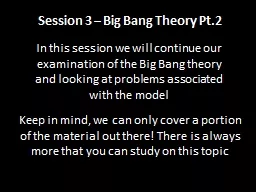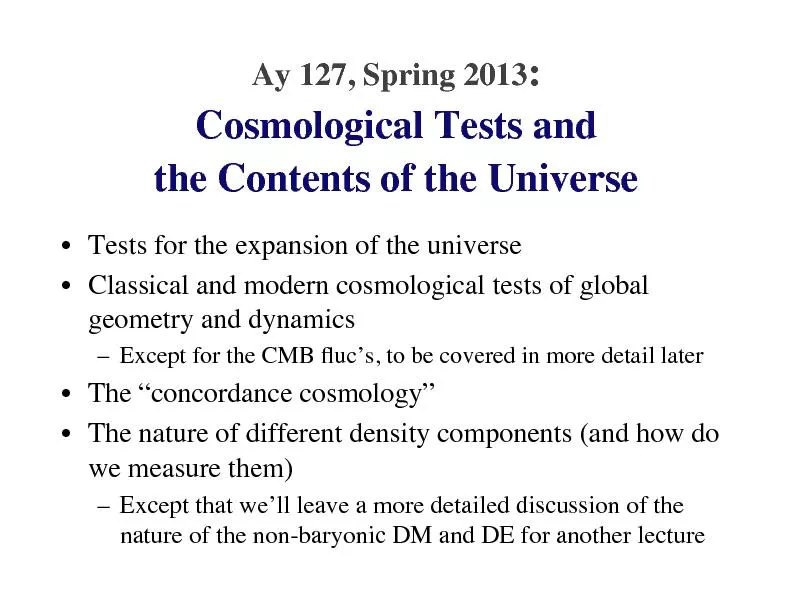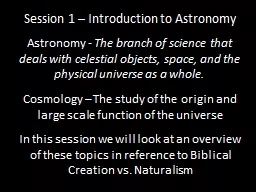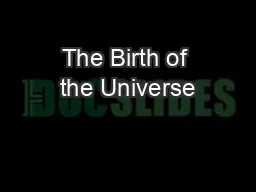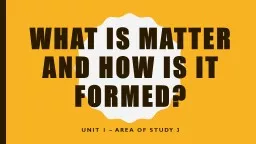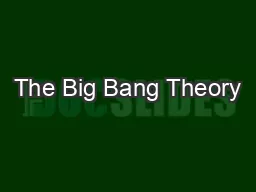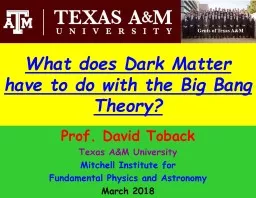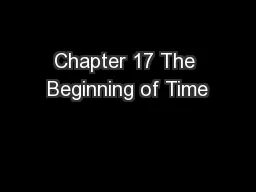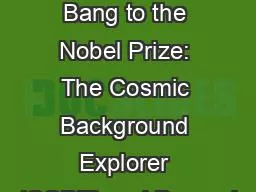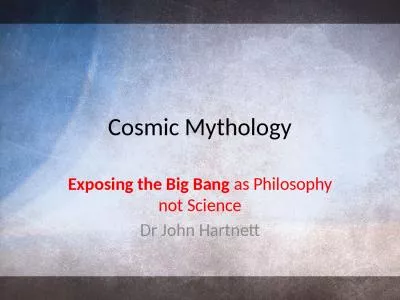PPT-Session 3 – Big Bang Theory Pt.2
Author : luanne-stotts | Published Date : 2017-06-25
In this session we will continue our examination of the Big Bang theory and looking at problems associated with the model Keep in mind we can only cover a portion
Presentation Embed Code
Download Presentation
Download Presentation The PPT/PDF document "Session 3 – Big Bang Theory Pt.2" is the property of its rightful owner. Permission is granted to download and print the materials on this website for personal, non-commercial use only, and to display it on your personal computer provided you do not modify the materials and that you retain all copyright notices contained in the materials. By downloading content from our website, you accept the terms of this agreement.
Session 3 – Big Bang Theory Pt.2: Transcript
Download Rules Of Document
"Session 3 – Big Bang Theory Pt.2"The content belongs to its owner. You may download and print it for personal use, without modification, and keep all copyright notices. By downloading, you agree to these terms.
Related Documents

